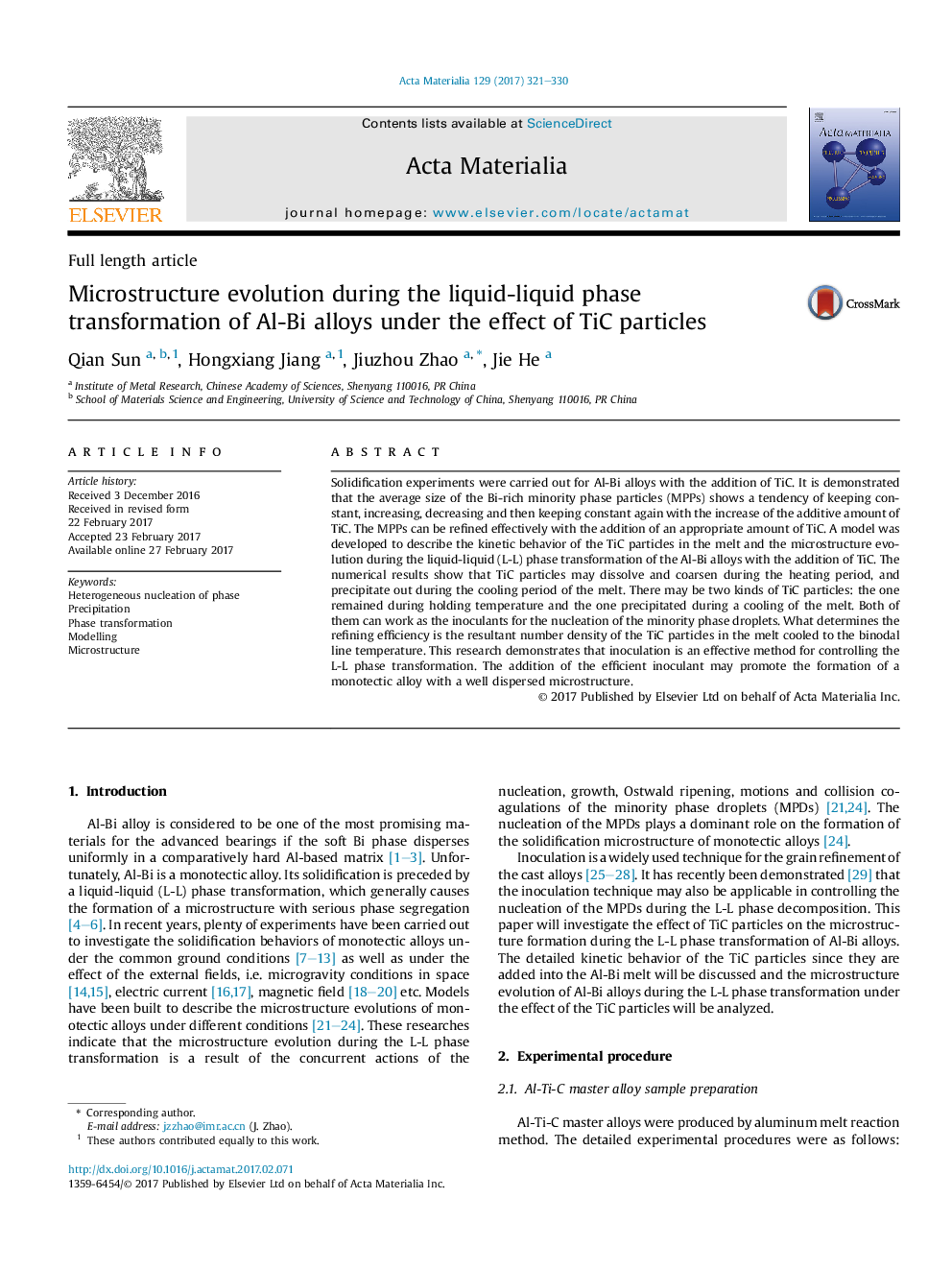| Article ID | Journal | Published Year | Pages | File Type |
|---|---|---|---|---|
| 5436228 | Acta Materialia | 2017 | 10 Pages |
Solidification experiments were carried out for Al-Bi alloys with the addition of TiC. It is demonstrated that the average size of the Bi-rich minority phase particles (MPPs) shows a tendency of keeping constant, increasing, decreasing and then keeping constant again with the increase of the additive amount of TiC. The MPPs can be refined effectively with the addition of an appropriate amount of TiC. A model was developed to describe the kinetic behavior of the TiC particles in the melt and the microstructure evolution during the liquid-liquid (L-L) phase transformation of the Al-Bi alloys with the addition of TiC. The numerical results show that TiC particles may dissolve and coarsen during the heating period, and precipitate out during the cooling period of the melt. There may be two kinds of TiC particles: the one remained during holding temperature and the one precipitated during a cooling of the melt. Both of them can work as the inoculants for the nucleation of the minority phase droplets. What determines the refining efficiency is the resultant number density of the TiC particles in the melt cooled to the binodal line temperature. This research demonstrates that inoculation is an effective method for controlling the L-L phase transformation. The addition of the efficient inoculant may promote the formation of a monotectic alloy with a well dispersed microstructure.
Graphical abstractDownload high-res image (334KB)Download full-size image
